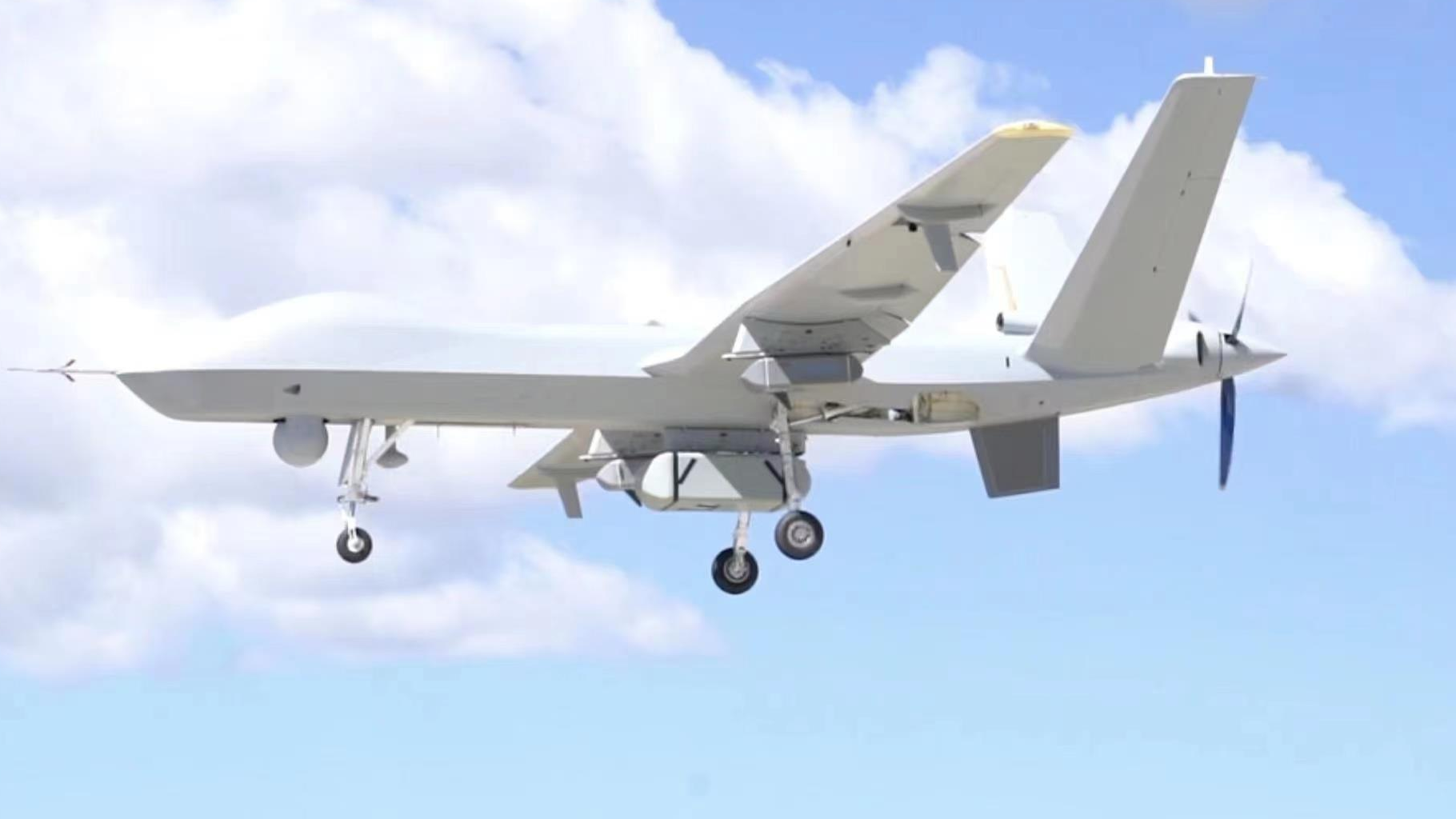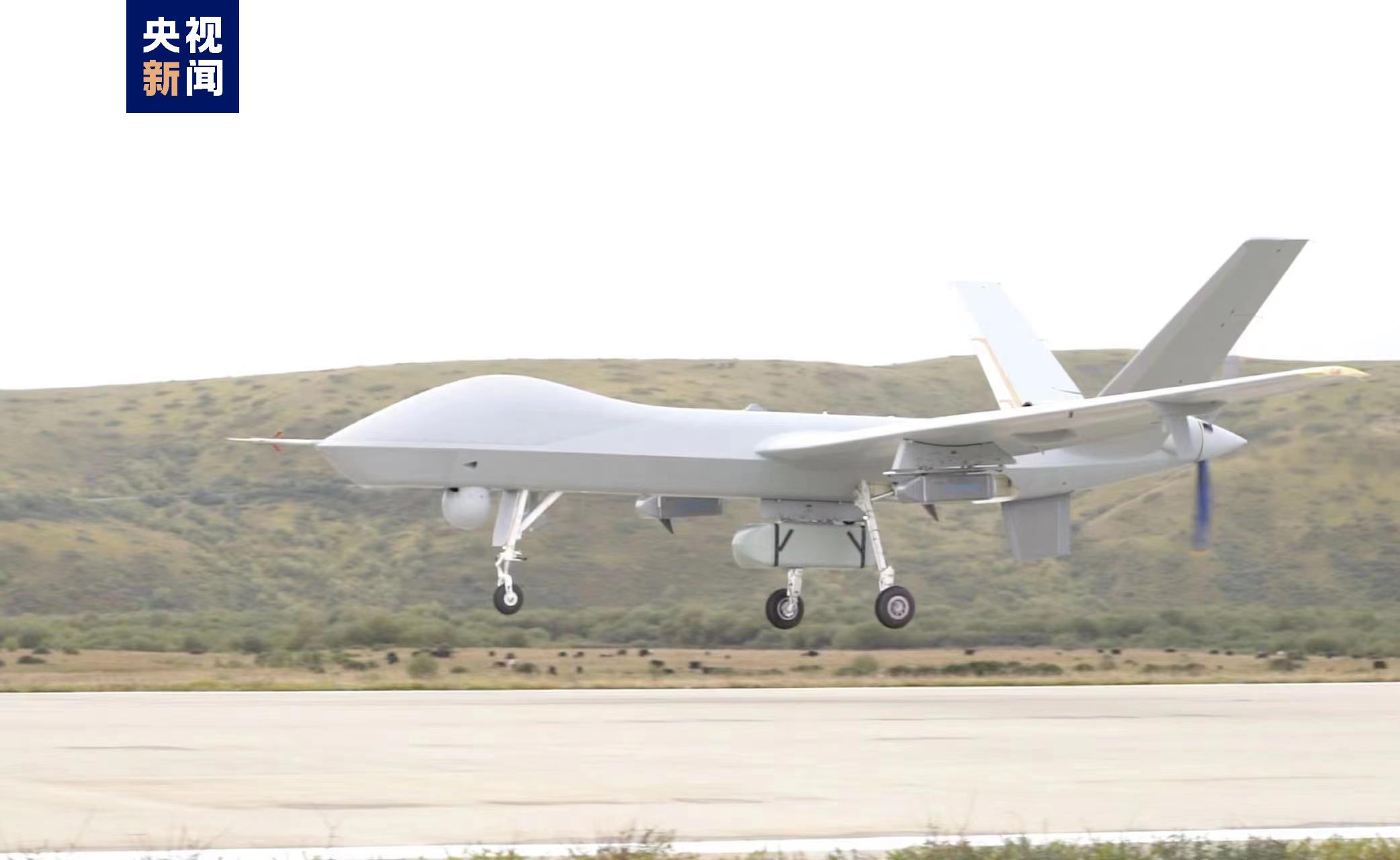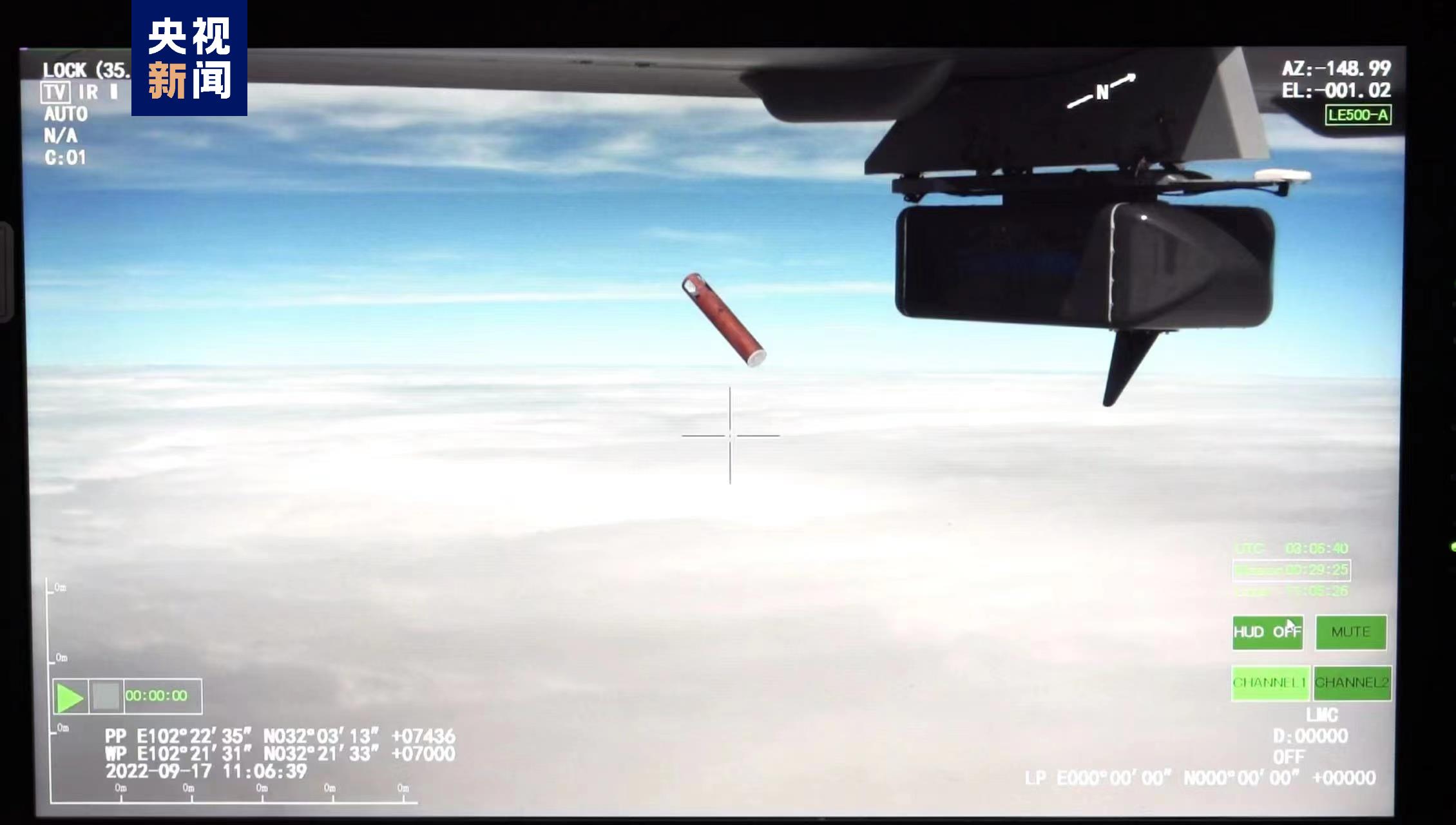
China's self-developed plateau meteorological observation variant of Wing Loong-2 drone. /CMG
China's self-developed plateau meteorological observation variant of Wing Loong-2 drone. /CMG
China's self-developed plateau meteorological observation variant of Wing Loong-2 drone successfully conducted its first test flight over the weekend in the country's Qinghai-Tibet Plateau.
As the Qinghai-Tibet Plateau has a great impact on climate change in China, East Asia and even the world, the test flight will provide more data for ecological protection on the plateau and scientific response to climate change.
During the test, 12 radiosondes dropped to scan the vertical and underlying surface of the atmosphere over the Qinghai-Tibet Plateau together with the airborne synthetic aperture radar and atmospheric microwave comprehensive profiler.

The test flight also transmitted observation data including cloud system distribution, water vapor structure, wind field and underlying surface in the source of three rivers (in the Sanjiangyuan Region where the Yangtze, Yellow and Lancang rivers all originate) to the ground.
This signifies the success of China's first test flight of the domestically developed high-altitude large-scale unmanned aerial vehicle (UAV) plateau meteorological observation.
Xu Xiangde, an academician from the Chinese Academy of Engineering and chief consultant to the experiment, told China Media Group (CMG) that with the mobile observation of high-altitude large UAVs, a larger vertical observation data of the Qinghai-Tibet Plateau had been obtained, making up the shortages of relevant data in the region.

China's Wing Loong-2 drone successfully conducted its first test flight in the country's Qinghai-Tibet Plateau, known as "the roof of the world." /CMG
China's Wing Loong-2 drone successfully conducted its first test flight in the country's Qinghai-Tibet Plateau, known as "the roof of the world." /CMG
The deployment of large UAV to the Qinghai-Tibet Plateau is part of projects initiated by the China Meteorological Administration (CMA).
In the future, the CMA also plans to conduct multiple tests relating to vapor channels, glaciers and regional water supply of the region, in order to build a sky-based observation system with the large UAVs being the main body, providing more data for ecological protection on the plateau and scientific responses to global climate change.

